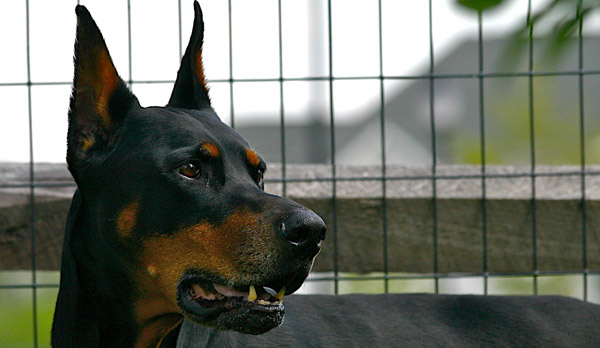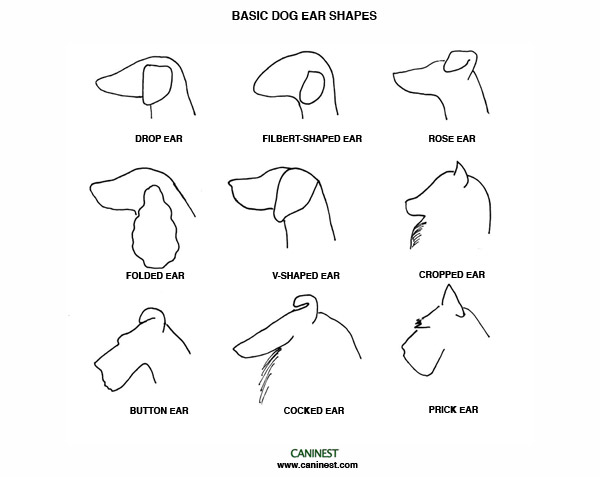You will need to help them with their ears because they probably won’t be able to scratch for themselves for a while. Dog ear infection causes a lot of discomfort in dogs having it. The earlier it is diagnosed, the better. It has been noted that some dog breeds stand a higher chance of getting ear infections. This is because of the position and anatomy of the ear in those breeds. Usually the agents responsible are either bacteria of Fungi that affect the external ear canal. Depending on the fungi
or bacteria causing the infection, the veterinarian may suggest treatment accordingly.
1. Ear Drops
In most of the case, ear infection is usually treated with ear drops. But first of all it is important to use a sterile gauze to clean the dog’s ear. That will prevent the infection from
worsening.
You need to take note of this. Only use ear drops if the dog’s ear drum is intact. You will need a vet to check your dog’s ear to confirm whether or not it is safe to use ear drops.
In the multitude of ear drops available it is always prudent to seek the advice of a veterinarian before purchasing one. Always read the label carefully before applying the ear drop to
your dog.
2. Topical Ointments
There are cases where the ear canal is partially closed. If that is the case then you will need to use topical ointments. They contain antibiotics or ingredients that reduces inflammation of
the ear. After the ear gets opened you can now apply the ear drops.
3. Distilled Water
It has been noted that distilled water can also be added to ear drops or topical ointments; it is helpful in cleaning the ear canal.
4. Oral Medication
In case of a much more severe infection the Doctor may suggest that you use some oral medication. He may suggest the administration of oral fungicides or antibiotics depending on
whether the infection is caused by fungi or bacteria respectively.
Corticosteroids may also be employed to reduce the swelling.
5. Surgical Procedure
There are severe cases where the ear canal closes completely. If that happen anti inflammatory medication is advised to be use hoping that the ear will reopen so that ear drops can be applied.
Sometimes even anti inflammatory medication does not work. In that case the vet has no choice but to perform surgery.
If you do care about the health of your dog and would want to get more information about how to keep your dog healthy just click on any of the other sites.
 A Dog Stroke has multiple causes with symptoms that range from behavioral change to difficulty moving. Diagnosis must be done by a veterinarian with treatment focused on the underlying cause of the stroke.â€
A Dog Stroke has multiple causes with symptoms that range from behavioral change to difficulty moving. Diagnosis must be done by a veterinarian with treatment focused on the underlying cause of the stroke.â€
Canine stroke symptoms include the following:
•Head tilt
•Turning the wrong way when called
•Eating out of one side of his food bowl
•Loss of balance
•Lethargy
•Blindness
•Loss of bladder and bowel control
•Can’t get up
•Convulsing
•Eyes fixed or rolled back
Luckily, dogs seem to recover from strokes more easily than humans.
YOU CAN help your dog get back to normal (and help yourself) by doing special things.
BUT, they will need extra care around the clock.
You can find all kind of items to help you with the care of your dog.
DON’T give up on your dog !
They DON’T have to be euthanized !
They can live many more happy years, and give you so much more joy.
Strokes rarely occur in canines. They are brought on when blood flow to the brain is impaired. There are two types of strokes, namely hemorrhagic and schemic. Schemic strokes occur when blood flow is impeded for some reason. The hemorrhagic variety occur when a blood vessel breaks.
Causes
There are a variety of reasons why your dog can experience a stroke. Some occur because of severe trauma to the head, such as being hit by a car. This problem can also be caused by ingesting various toxins. Underlying medical conditions can also be to blame like Cushings disease in canines. Other common conditions include heart disease, diabetes, brain tumors, and dog kidney disease
Symptoms
Dogs experiencing a stroke display some of the same symptoms caused by other conditions. Constant circling, difficulty walking, and head tilting are common. Dogs may also experience loss of bowel control, behavior changes, and sudden blindness.
Diagnosis
You will need to seek medical assistance quickly if your dog displays some of these symptoms. Quick diagnosis and treatment goes a long way towards a complete recovery. Your dog will likely have a physical exam at first. If your dog has had a stroke, he will perform a CT scan or MRI to try to determine the cause. These two procedures require that your dog be anesthetized.
Treatment
Canine strokes are treated by determining the underlying medical condition and treated it if possible. Your dog shouldn’t experience anymore strokes if the underlying cause can be identified and treated. The damage done by a stroke is typically irreparable. Most dogs recover within a few weeks though. However, your dog may have certain behavioral changes after having one.
All owners should know a little something about various diseases that can affect their dog. You can read up on many different potential health problems at dog-illnesses.com.
Strokes rarely occur in canines. They are brought on when blood flow to the brain is impaired. There are two types of strokes, namely hemorrhagic and schemic. Schemic strokes occur when blood flow is impeded for some reason. The hemorrhagic variety occur when a blood vessel breaks.
Causes
There are a variety of reasons why your dog can experience a stroke. Some occur because of severe trauma to the head, such as being hit by a car. This problem can also be caused by ingesting various toxins. Underlying medical conditions can also be to blame like Cushings disease in canines. Other common conditions include heart disease, diabetes, brain tumors, and dog kidney disease
Symptoms
Dogs experiencing a stroke display some of the same symptoms caused by other conditions. Constant circling, difficulty walking, and head tilting are common. Dogs may also experience loss of bowel control, behavior changes, and sudden blindness.
Diagnosis
You will need to seek medical assistance quickly if your dog displays some of these symptoms. Quick diagnosis and treatment goes a long way towards a complete recovery. Your dog will likely have a physical exam at first. If your dog has had a stroke, he will perform a CT scan or MRI to try to determine the cause. These two procedures require that your dog be anesthetized.
Treatment
Canine strokes are treated by determining the underlying medical condition and treated it if possible. Your dog shouldn’t experience anymore strokes if the underlying cause can be identified and treated. The damage done by a stroke is typically irreparable. Most dogs recover within a few weeks though. However, your dog may have certain behavioral changes after having one.
All owners should know a little something about various diseases that can affect their dog. You can read up on many different potential health problems at dog-illnesses.com.
Bladder Control
When your dog has a stroke, sometimes that causes them some trouble holding their urine in when they stand up from a laying position. You can get medicine to stop the leaking.
Check with your Veterinarian and they can give you a prescription and tell you how much to give them in one dose.
Also when your dog gets older, especially female, they have a harder time getting up.
There are prescriptions, and you can get doggie diapers to help with the leakage.
Hydrotherapy in Dogs
Reduces pain,inflammation, and increasing range of motion in your dog.
Massage Therapy
Does your dog seem tense and stiff? Maybe even a little crabby? If so, consider giving him a massage. A properly performed massage can help release pent up stress and negative energy, resulting in a calm and more peaceful pet.
The sensation of simple touch of the fur (skin) to the manipulation of muscles has
shown to enhance the human animal bond, and sometimes even establish it. For the inactive and older pet, as well for the young or working pet, the owner can provide a gentle comforting touch. This helps provide security and calmness and will aid in relieving stress. Be aware that at home massage is different than the massage done by a certified massage therapist. These trained people can provide a more thorough massage, incorporating a variety of techniques. But you can massage your dogs back, and shoulders ,and back leg joints, very lightly. Do Not ever give them a deep massage ! Each time you come in contact with your dog while petting them just give them a quick little massage. It’s also good to give them one before you leave them alone.
If you must keep your dog out side, you need use solar power heat in winter and a portable air-conditioner in the summer, The dog house needs to be under shade, with at least a fan blowing on them.
You will need to have the vet shave their bottom, because you will have to diaper them. The dog may not be able to get up on their own to go pottie.













 Â
  Â
  Â
 









 If you have a look inside the ear of an infected dog you will see dark reddish brown or black debris throughout the ear canal which has been described as looking like coffee grounds. Ear mites are visible to the naked eye and can be seen as white dots among the dark debris. You may even see them moving around.
If you have a look inside the ear of an infected dog you will see dark reddish brown or black debris throughout the ear canal which has been described as looking like coffee grounds. Ear mites are visible to the naked eye and can be seen as white dots among the dark debris. You may even see them moving around. You can purchase ear mite treatments from your pet supply store or your vet will prescribe an oily insecticide to clean the ear canals. It is important to clean out all the gunky black stuff from the ear canal daily. You can clean this with a thin cloth or cotton balls dipped in olive oil. (or any other vegetable oil) The medication should then be massaged deeply into the dog’s ear taking care to get into all the nooks and crannies of the ear canal.
You can purchase ear mite treatments from your pet supply store or your vet will prescribe an oily insecticide to clean the ear canals. It is important to clean out all the gunky black stuff from the ear canal daily. You can clean this with a thin cloth or cotton balls dipped in olive oil. (or any other vegetable oil) The medication should then be massaged deeply into the dog’s ear taking care to get into all the nooks and crannies of the ear canal. Revolution is another option. It is a Parasiticide that is applied to the skin of dogs six weeks of age and older. Revolution is used to prevent heartworm disease, kills adult fleas and prevents flea eggs from hatching and treats and prevents ear mite infestation. It can be purchased from your vet, from a pet supply store and online.
Revolution is another option. It is a Parasiticide that is applied to the skin of dogs six weeks of age and older. Revolution is used to prevent heartworm disease, kills adult fleas and prevents flea eggs from hatching and treats and prevents ear mite infestation. It can be purchased from your vet, from a pet supply store and online.
